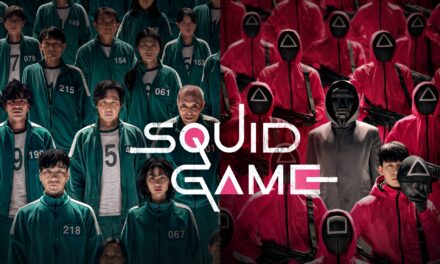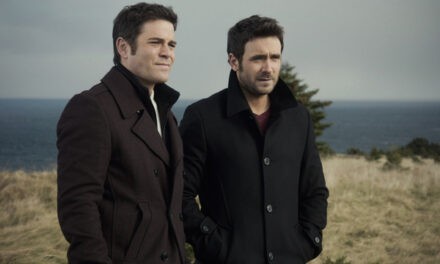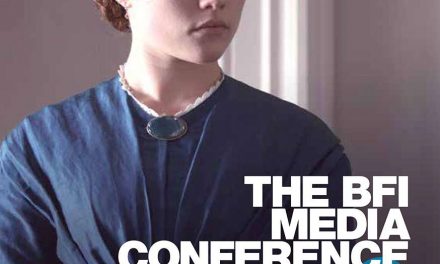British history is full of strange and disturbing noises. They rebound and echo, providing a constant reminder to future generations of the violent noises of the past- signalling colonial atrocities, and the stifled disenfranchised voices of class and gender inequalities. If the gothic, supernatural and horror genres are concerned with the ‘return of the repressed’, then it is perhaps no surprise that supernatural British television reflects this. Yet furthermore, this piece will argue that the utilisation of sound in this generic context is reflected in the quality of the output of British supernatural television whereby a sonic or aural aesthetic is expertly employed to create a specific paradigm of sound to optimise the acoustic possibilities of the televisual medium. I will argue that this persistent strain not only manifests due to either budgetary restrictions, antecedents in both oral story-telling and radio ‘horror’, or even simply an appendage of the theatrical tradition of British film and television (all important components, nonetheless) but an aesthetic which at once utilises the dynamics of the televisual medium and suggests a deeper, British cultural concern with the inability to silence voices of discontent in historic domestic and national history.
Sound and music are integral to British supernatural television. In many cases, the sonic aesthetic insinuates itself into the titles of these productions: The Stone Tape (1972), A Woman Sobbing (1972), A Child’s Voice (1978), Whistle and I’ll Come to You (1968, 2010). Elsewhere, as noted by Wheatley (2006), the playing of instruments and music signals terror or the ‘return of the repressed’. Wheatley mentions the hurdy-gurdy in Lost Hearts and there are more instances: the clavichord in The Exorcism, the whistle in Whistle and I’ll Come to You (1968, 2010) the song ‘Scarborough Fair’ in Remember Me (2014) and the children’s music box in The Woman in Black (1989). In The Stone Tape, by Nigel Kneale, the sonic parameters act as a recording device, which captures severe emotional distress and re-plays it endlessly for future generations. The same is also true for Kneale’s adaptation of Susan Hill’s The Woman in Black. In this, the terrible accident, which claimed the lives of the Drablow children on the causeway, is a persistent and prominent aural motif (also evident in the highly successful stage adaptation). It features a short leitmotif in which the eerie ‘clip-clopping’ of horse’s hooves builds to a crescendo of whinnying horses and screaming children. It is hard to replicate in writing, but the desperate climactic cry of “mummy, mummy- mum-eh-hee-ee!” as the children sink into the mire plagues the central character, forcing him to cover his ears and cower in horror. This sonic vortex of despair represents an endless recording of the tragedy of history, suggesting that the voices of the wronged and fallen must endlessly return to remind those in the present of past transgressions. Similarly, a disruption of the quotidian and mundane sounds of empty landscapes produces an eruption of ‘noisy’ history. It is an aesthetic technique, which at once utilises the confined and open spaces of the diegetic environment and the domestic setting of televisual reception, yet also sidesteps the utility of excessive and extravagant special effects and visceral display more common in filmic horror. This is evidenced in a number of other texts, many of which remain relatively obscure as lost or forgotten examples of British televisual history. For example, by the 1980s, the state levied Children’s Film Foundation series of films had migrated to television. In Haunters of the Deep (1984), the plight of Cornish tin miners tragically ‘caved-in’ is signalled by the ghostly tapping of picks against stone. In a more pronounced sense, in the CFF TV film Out of the Darkness (1985), the spirit of a plague victim, wrongly ostracised and killed by the local community, is again manifested by a sonic echo of the past as an increasingly forceful sonic vortex, which opens a window into a terrible history. An ancient, pagan evil is a common theme of 1970s British supernatural television with the famous children’s series Children of the Stones (1977) title sequence exhibiting an enhanced aesthetic of pre-Christian, pagan echoes- complete with eerie breathing, chanting, moaning and singing and discordant music. The unwanted and unexpected appearance of the standing stones is signalled by a version of this deeply unsettling sonic confection throughout the episodes.

Yet oftentimes, it is the mundanity and desolation of the landscape, which evokes fears of isolation, abandonment and terror. Again, this is evoked through abstemious use of sound. The use of the sound of wind echoing through empty landscapes is manifest in titles such as A Warning to the Curious (1972), The Woman in Black and Robin Redbreast (1970) whilst the desolate sounds of the undulating sea are employed to create an atmosphere of dread in both versions of Whistle and I’ll Come To You as well as lesser known texts such as Tarry Dan, Tarry Dan, Scary Spooky Old Man (1978). In many cases, the title sequences themselves, such as those for the BBC series Dead of Night, employ this technique of both aural and visual scarcity and dissonance. In Dead of Night, breathing sounds and other natural phenomena create an instant atmosphere of dread which is then replicated in the ensuing narratives whilst the title sequence for another BBC series Supernatural (1977) consists simply of church organ music echoing throughout cavernous spaces whilst the visuals present close-ups of gargoyles and other gothic architecture.
The strengths of British television are often demonstrated through actorly performance and theatrical staging. A chiaroscuro aural technique, whereby the jarring contrasts between light and dark, sound and silence is created. This is in evidence in a number of the supernatural texts discussed- particularly so in the more famous examples of Robin Redbreast and Shalcken The Painter (1979). This has been discussed (e.g. Hand, 2010) particularly with regards to the famous ‘Ghost Story for Christmas’ entries of the 1970s as well as Jonathan Miller’s Omnibus special adaptation of Whistle and I’ll Come to You (1967). This last example perhaps represents the apotheosis of sound technique in supernatural television with perfectly orchestrated use of sound and silence, natural and unnatural soundscapes pitched in perfect discordant and unsettling rhythm matched with Michael Horden’s own busy and self-revealing vocal performance. Another lesser- celebrated example is The Exorcism, one of the episodes of the Dead of Night series. In this, a Christmas day celebration between two middle-class couples in an old renovated cottage is disrupted when they are made to suffer for their relative decadence by the avenging spirit of a woman (Sarah-Jane) who starved to death with her two children in the same cottage hundreds of years earlier whilst the local gentry dined extravagantly. In one extraordinary sequence given dramatic thrust by the performance of Anna Cropper as Rachel (who also played the lead in Robin Redbreast) she is possessed by the spirit of Sarah-Jane who speaks through her for a full, sad, eloquent ten-minute speech. Here the voices of British history are given full expression by the actorly tradition which equates the struggles of the past to the class struggles of its setting (in the year of industrial strife and the first ‘winter of discontent’). For an even more obscure yet equally worthy example, the Granada Production ‘Christmas Spirits’ (1981) is emboldened and almost entirely carried by the narrative voiceover of American actress Elaine Stritch (as Julia Myerson) as she spends an evening in a haunted mansion.

A Woman Sobbing (1972), one of the other remaining episodes from the Dead of Night series introduced an even more pronounced ‘gendered’ element to this aesthetic of aurality. Anna Massey portrays a bored and depressed housewife (Jane Pullar) who moves into a large property in the country. Jane is plagued by the nightly sobbing of an unidentified female that emanates from the house’s attic, and increasingly driven to madness by these nocturnal episodes as well as her usurpation as female head of the household by an attractive Swedish au pair (while her husband and his work cronies leer at their secretaries). Eventually, as a spell in a psychiatric ward and a cleansing séance fail to eliminate the ghostly sobbing, she takes her own life. The episode’s coda sees the same happening with the new female inhabitant, as presumably, it is June’s crying which continues the wretched circle. Here, the entrapment of women in a despairing patriarchal system (in the milieu of 1970s British sexual politics) including fear of her husband replacing her with a younger model, her unsuitability for motherhood and the sheer boredom and unfulfilling nature of domestic servitude are conflated as a sonic curse which similarly afflicts all the female inhabitants, trapping them within the parameters of its own sonic boundaries. This is similarly echoed by Jane Asher’s character Jill in The Stone Tape, who is the first to be plagued by the screaming ghost of a servant girl ascending an imaginary staircase, before falling victim to a far older and malevolent evil.

To take a more recent example, The Enfield Haunting, premiered on Sky Living in 2015 and was based on alleged events in a North London council home in the 1970s. Shooting on lightweight HD and with access to more sophisticated special effects technology (which it makes great use of), the sonic aesthetic is still very much in evidence. It opens with a recitation of a child’s late night ghost story, and escalates through a series of banging noises (see also The Haunting, 1963) before the malevolent spirit is viewed. It is the voice of the spirit, which is most significant, appearing through the mouth of a medium and the lead character of Janet Hodgson (Eleanor Worthington- Cox) as well as various recording equipment. It is redolent of the controversial ‘Screen One’ entry Ghostwatch (1992) which itself was loosely inspired by the same alleged events at Enfield. In this drama, the ‘ghost in the machine’ paradigm is enacted with live television acting as a significant conduit through which the evil manifests. A single mother and her two daughters are plagued by a malevolent spirit nicknamed ‘Mr Pipes’ after the banging sound which first manifests as banging sounds in the pipes. As with The Enfield Haunting, the evil voice from the past speaks through the young female character at first, and then through Michael Parkinson at the end. The physical manifestation is preceded by the sound of cats screeching and the repetition of a line from Little Red Riding Hood– “what big eyes you have”. Women and children, the most vulnerable sections of society, are therefore often the victims, alongside excessively inquisitive, sensitive or arrogant males.
In a discussion of the possibility of supernatural phenomena in The Secret of Crickley Hall (2012) the question is posed “If it’s not ghosts…what is it then”? The answer: “It’s history”. Indeed, the ghostly echo of history in British supernatural television travels far and this piece is simply an indicator to draw attention both to under-appreciated texts and the techniques from which they draw their auditory power. Dripping taps, scratching rats and the sinister flapping of birds’ wings, amongst other mundane and primal sounds punctuate the soundscape of British horror and supernatural television in numerous other examples (Doctor Who alone, could possibly engender a similar consideration). Significantly, in contrast to many of the celebrated horror films of both British and Hollywood cinematic history, the threat here is not satanic or demonic, but the eruption of historic misdeeds. British history is haunted by the voices of the past, and these texts speak to the terror evoked when these voices return to the present.
Mark Fryers completed his AHRC funded PhD, British National Identity and Maritime Film and Television, 1960-2012 in 2015. He has recently published a book chapter on The Onedin Line and amongst others, has another forthcoming on To The Ends of the Earth as well as journal articles on Howards’ Way and British television’s role in the film industry. He is currently working on an AHRC funded research project on women amateur filmmakers.





